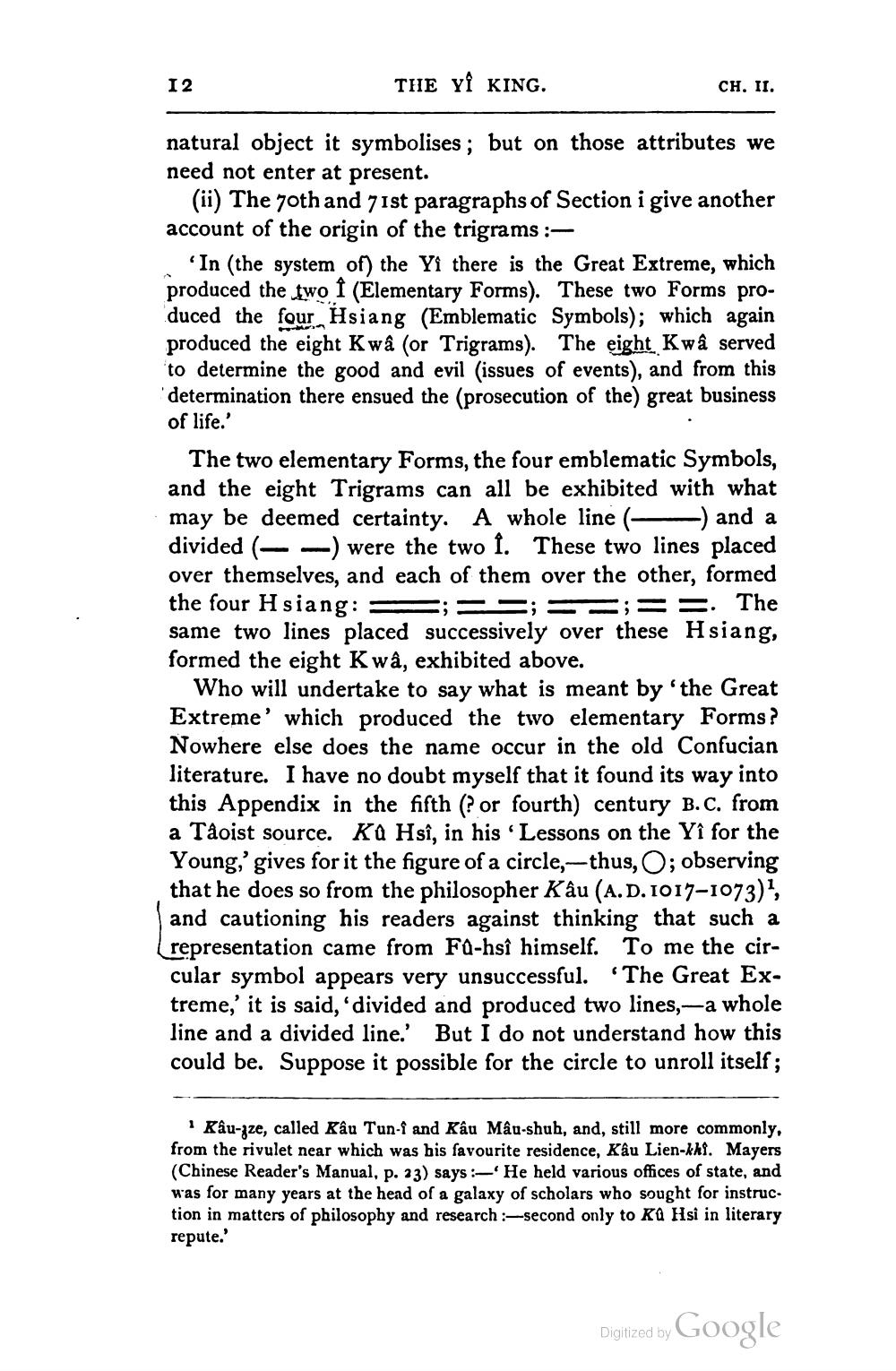________________
12
THE YÎ KING.
CH. 11.
natural object it symbolises; but on those attributes we need not enter at present.
(ii) The 70th and 71st paragraphs of Section i give another account of the origin of the trigrams :
'In (the system of) the Yi there is the Great Extreme, which produced the two I (Elementary Forms). These two Forms produced the four Hsiang (Emblematic Symbols); which again produced the eight Kwâ (or Trigrams). The eight Kwå served to determine the good and evil (issues of events), and from this determination there ensued the (prosecution of the) great business of life.'
The two elementary Forms, the four emblematic Symbols, and the eight Trigrams can all be exhibited with what may be deemed certainty. A whole line ( ) and a divided (- -) were the two i. These two lines placed over themselves, and each of them over the other, formed the four H siang: = ; -;= =;= =. The same two lines placed successively over these Hsiang, formed the eight Kwâ, exhibited above.
Who will undertake to say what is meant by 'the Great Extreme' which produced the two elementary Forms? Nowhere else does the name occur in the old Confucian literature. I have no doubt myself that it found its way into this Appendix in the fifth (or fourth) century B.C. from a Taoist source. Ka Hsî, in his 'Lessons on the Yî for the Young,' gives for it the figure of a circle,-thus, O; observing that he does so from the philosopher Kâu (A.D. 1017-1073)', and cautioning his readers against thinking that such a representation came from Fu-hsî himself. To me the circular symbol appears very unsuccessful. 'The Great Extreme, it is said, 'divided and produced two lines,-a whole line and a divided line.' But I do not understand how this could be. Suppose it possible for the circle to unroll itself;
Râu-zze, called Râu Tun-i and Kâu Mâu-shub, and, still more commonly, from the rivulet near which was his favourite residence, Kâu Lien-kki. Mayers (Chinese Reader's Manual, p. 23) says :—He held various offices of state, and was for many years at the head of a galaxy of scholars who sought for instruction in matters of philosophy and research :-second only to Ka Hsi in literary repute.'
Digitized by Google




